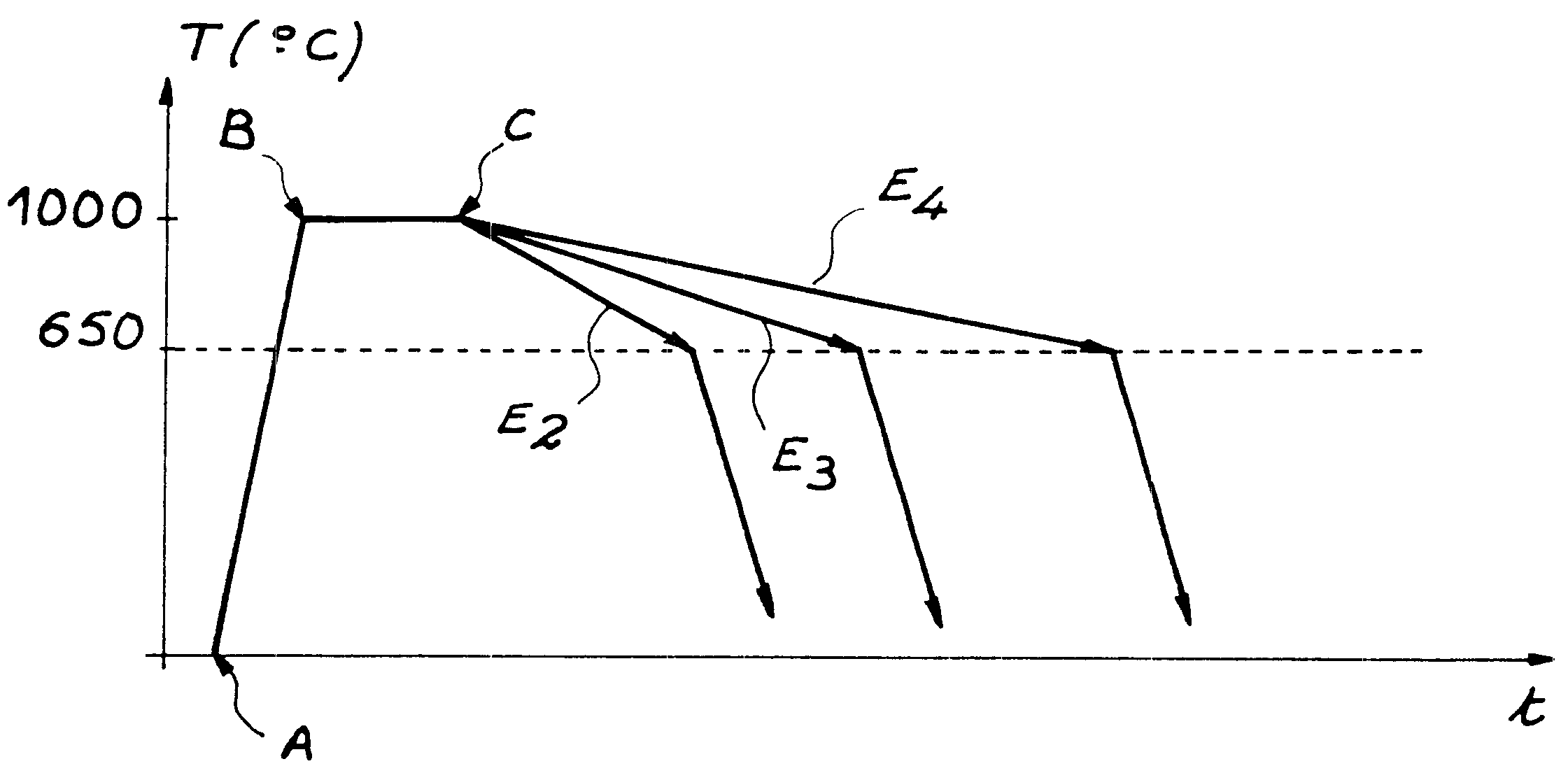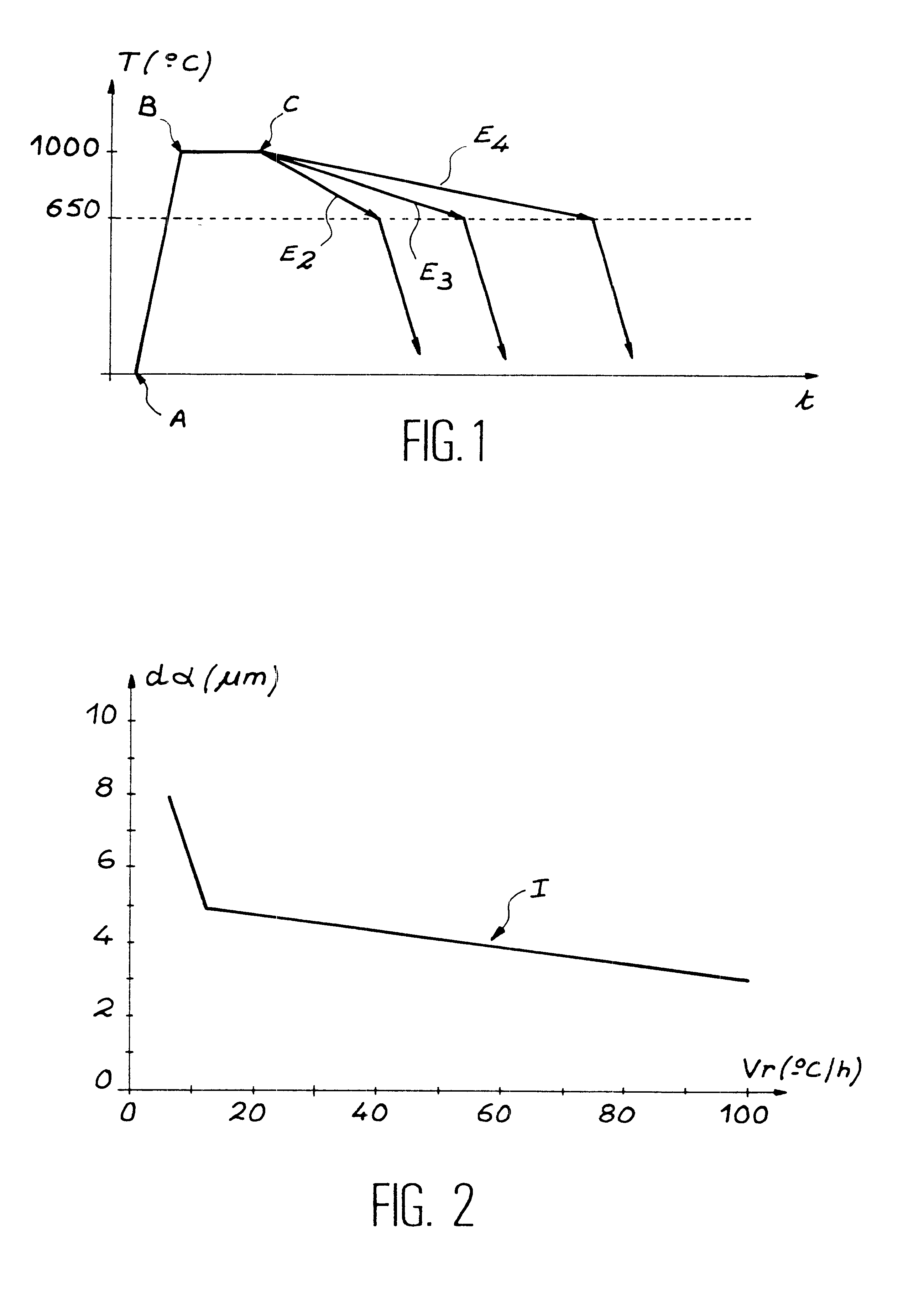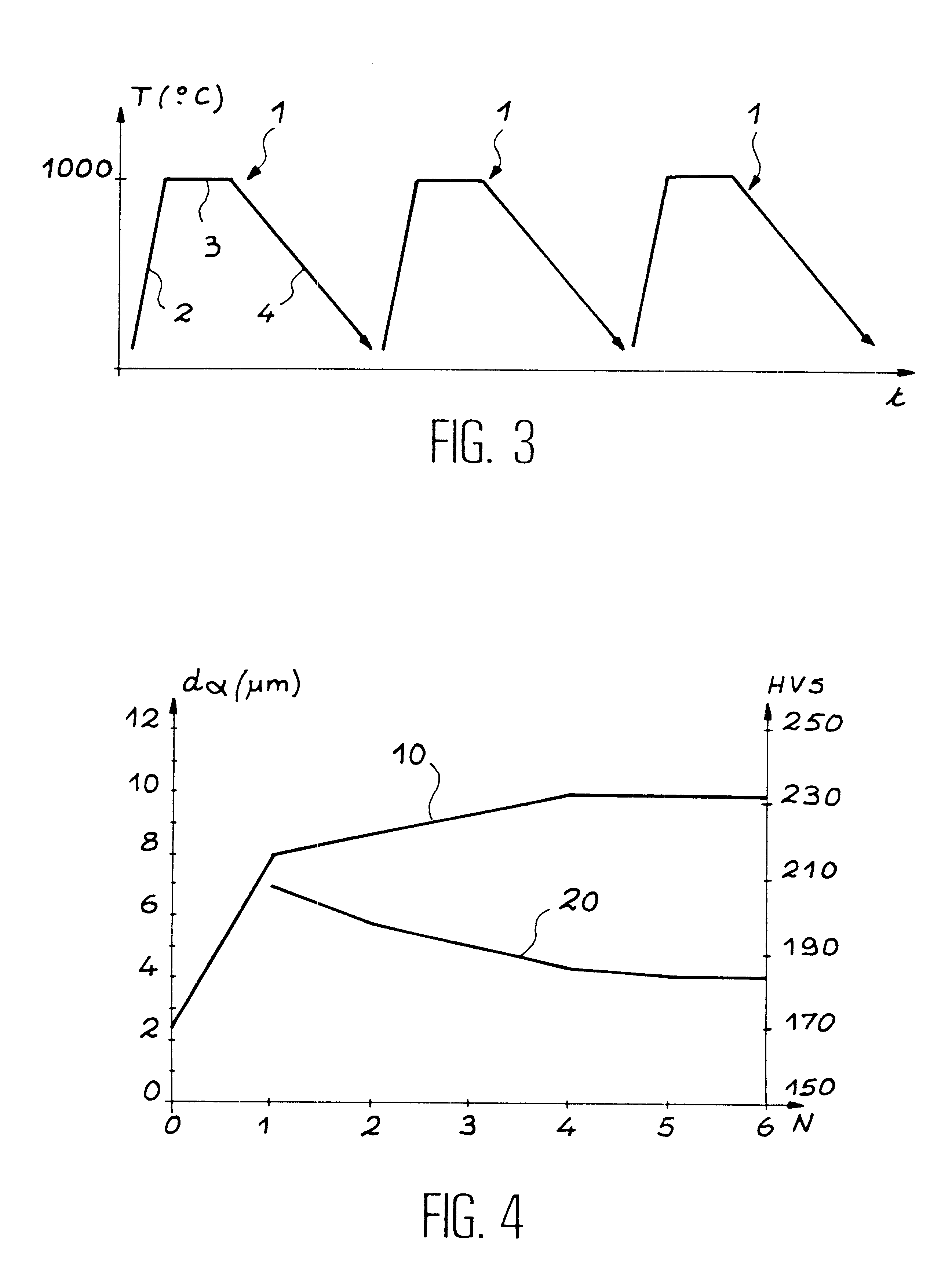Method of manufacturing a ferritic-martensitic, oxide dispersion strengthened alloy
a technology of oxide dispersion and manufacturing method, which is applied in the direction of fuel elements, climate sustainability, reactor fuel elements, etc., can solve the problems of high anisotropy in its mechanical properties, too low mechanical strength, and brittleness
- Summary
- Abstract
- Description
- Claims
- Application Information
AI Technical Summary
Benefits of technology
Problems solved by technology
Method used
Image
Examples
example 1
Preparation of Ferritic-martensitic Allows and Examples of Fe-9 Cr-1 Mo alloys
The alloys manufactured in this example, according to the method of the invention, are alloys of the 9 Cr-1 Mo type, based on iron, named EM10 in what follows, and strengthened by particles of yttrium oxide.
Each of these alloys is manufactured by a mechanical alloying method. An ingot having the composition of the alloy desired is atomized under argon in such a way as to obtain a 9 Cr-1 Mo pre-alloyed powder. This pre-alloyed powder is ground and mixed with yttrium oxide (Y.sub.2 O.sub.3) in powder form, in an attritor under an atmosphere of argon. Then the resulting powder is compacted by hot drawing at a temperature of 1100.degree. C. at a drawing ratio of between 15 and 30 in order to obtain a martensitic blank that includes chromium strengthened by the dispersion of oxide particles.
Several alloys are manufactured. The chemical composition of these alloys is shown in Table 1 below. When the alloy contai...
example 2
Effect of the Cooling Rate According to the Invention on the Grain Size of the EM1030 Y.sub.2 O.sub.3 -ODS Alloy with a Ferritic Structure
In this example, the alloy manufactured is an alloy with a ferritic structure.
A series of tests are carried out starting with a martensitic EM10+Y.sub.2 O.sub.3 -ODS blank having the composition described in Table 1, in order to measure the effect of cooling rate on the grain size of the manufactured alloy.
Four samples of the EM10+Y.sub.2 O.sub.3 -ODS alloy were subjected to a first thermal cycle according to the invention, comprising an austenitization at a temperature of 1000.degree. C. for 30 minutes followed by cooling to 650.degree. C., at a rate that was different for each sample, and fast cooling at a common rate of 3.degree. C. per second from 650.degree. C.
Table 2 below shows the cooling rates for each sample (designated E.sub.1, E.sub.2, E.sub.3 and E.sub.4) as far as 650.degree. C.
FIG. 1 is a graph illustrating the thermal cycles of E.s...
example 3
Repetition of a Thermal Cycle According to the Invention on an Alloy with a Ferritic ODS Structure
This example uses an ODS-EM10+Y.sub.2 O.sub.3 alloy such as that described in Table 1 above.
A thermal cycle with slow cooling is applied in a repeated way on this alloy in such a way as to measure the effect of this repetition on the grain size of the alloy.
FIG. 3 illustrates diagrammatically this Example 3, reference number 1 indicating a slow thermal cycle. This thermal cycle comprises an austenitization which consists of heating the alloy to a temperature of 1000.degree. C., indicated by reference number 2, and of holding the alloy at this temperature for 30 minutes, indicated by reference number 3; and then of cooling this alloy at a slow rate of 6.degree. C. / h, indicated by reference number 4. In this Figure, this cycle is repeated 3 times.
Measurements of the mean grain size made using an image analysis technique show that repetition of the thermal cycle according to the invention ...
PUM
| Property | Measurement | Unit |
|---|---|---|
| Percent by mass | aaaaa | aaaaa |
| Angle | aaaaa | aaaaa |
| Angle | aaaaa | aaaaa |
Abstract
Description
Claims
Application Information
 Login to View More
Login to View More - R&D
- Intellectual Property
- Life Sciences
- Materials
- Tech Scout
- Unparalleled Data Quality
- Higher Quality Content
- 60% Fewer Hallucinations
Browse by: Latest US Patents, China's latest patents, Technical Efficacy Thesaurus, Application Domain, Technology Topic, Popular Technical Reports.
© 2025 PatSnap. All rights reserved.Legal|Privacy policy|Modern Slavery Act Transparency Statement|Sitemap|About US| Contact US: help@patsnap.com



